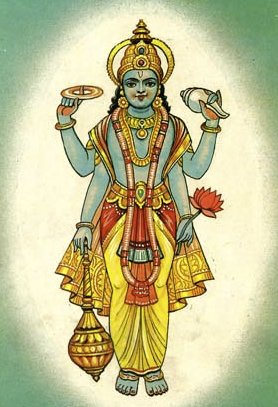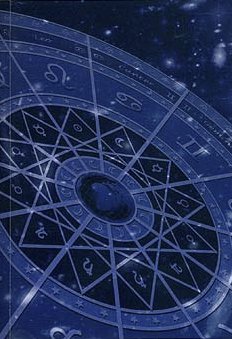Maniman, Maṇimān, Maṇiman: 4 definitions
Introduction:
Maniman means something in Hinduism, Sanskrit. If you want to know the exact meaning, history, etymology or English translation of this term then check out the descriptions on this page. Add your comment or reference to a book if you want to contribute to this summary article.
In Hinduism
Vaishnavism (Vaishava dharma)
Source: ISKCON Press: GlossaryMaṇimān (मणिमान्).—A Yakṣa who was killed by Bhīmasena. (Vana Parva in Mahābhārata)

Vaishnava (वैष्णव, vaiṣṇava) or vaishnavism (vaiṣṇavism) represents a tradition of Hinduism worshipping Vishnu as the supreme Lord. Similar to the Shaktism and Shaivism traditions, Vaishnavism also developed as an individual movement, famous for its exposition of the dashavatara (‘ten avatars of Vishnu’).
Purana and Itihasa (epic history)
Source: archive.org: Puranic Encyclopedia1) Maṇimān (मणिमान्).—A king. Mahābhārata gives the following details about him.
(i) Maṇimān was born of an aspect of Vṛtra, son of the asura Danāyu. (Śloka 44, Chapter 67, Ādi Parva).
(ii) This king was present at the marriage of Draupadī. (Śloka 22, Chapter 185, Ādi Parva).
(iii) Bhīmasena while on his early victory march defeated this king. (Śloka 11, Chapter 30, Sabhā Parva).
(iv) This king fought on the side of the Pāṇḍavas during the great Kurukṣetra battle. (Śloka 20, Chapter 4, Udyoga Parva).
(v) Maṇimān was killed in the fight between Maṇimān and Bhūriśravas. (Śloka 53, Chapter 23, Droṇa Parva).
2) Maṇimān (मणिमान्).—A serpent. This serpent is a member of the court of Varuṇa. (Śloka 9, Chapter 9, Sabhā Parva).
3) Maṇimān (मणिमान्).—A sacred place. If one spends a night there one would get the benefit of performing an Agniṣṭoma yajña. (Śloka 101, Chapter 82, Vana Parva).
4) Maṇimān (मणिमान्).—A Yakṣa who was a friend of Kubera. Once the sage Agastya cursed him that he would be killed by the hand of a man. The yakṣa was killed by Bhīmasena. (Śloka 59, Chapter 160, Vana Parva and see under AGASTYA, Para 10).
5) Maṇimān (मणिमान्).—A mountain. Once, when Arjuna went on a pilgrimage to Śiva’s presence with Kṛṣṇa in a dream, he saw this mountain Maṇimān. (Śloka 24, Chapter 9, Droṇa Parva).
6) Maṇimān (मणिमान्).—A pārṣada of Śiva. This pārṣada joined hands with Vīrabhadra to injure the sage Bhṛgu at the Dakṣayāga. (4th Skandha, Bhāgavata).
Source: Cologne Digital Sanskrit Dictionaries: The Purana IndexMaṇiman (मणिमन्).—A son of Maṇivara.*
- * Vāyu-purāṇa 69. 158.

The Purana (पुराण, purāṇas) refers to Sanskrit literature preserving ancient India’s vast cultural history, including historical legends, religious ceremonies, various arts and sciences. The eighteen mahapuranas total over 400,000 shlokas (metrical couplets) and date to at least several centuries BCE.
Jyotisha (astronomy and astrology)
Source: Wisdom Library: Brihat Samhita by VarahamihiraMaṇimān (मणिमान्) refers to a mountain belonging to “Apara or Aparadeśa (western divisions)” classified under the constellations of Jyeṣṭhā, Mūla and Pūrvāṣāḍha, according to the system of Kūrmavibhāga, according to the Bṛhatsaṃhitā (chapter 14), an encyclopedic Sanskrit work written by Varāhamihira mainly focusing on the science of ancient Indian astronomy astronomy (Jyotiṣa).—Accordingly, “The countries of the Earth beginning from the centre of Bhāratavarṣa and going round the east, south-east, south, etc., are divided into 9 divisions corresponding to the 27 lunar asterisms at the rate of 3 for each division and beginning from Kṛttikā. The constellations of Jyeṣṭhā, Mūla and Pūrvāṣāḍha represent the western divisions consisting of [i.e., Maṇimān] [...]”.

Jyotisha (ज्योतिष, jyotiṣa or jyotish) refers to ‘astronomy’ or “Vedic astrology” and represents the fifth of the six Vedangas (additional sciences to be studied along with the Vedas). Jyotisha concerns itself with the study and prediction of the movements of celestial bodies, in order to calculate the auspicious time for rituals and ceremonies.
See also (Relevant definitions)
Starts with: Mani-mantiraushatam, Manimamthara, Manimana, Manimandapa, Manimandapamahatmya, Manimandita, Manimanguravalli, Manimanjari, Manimanjari or Maninidhi or Matimanjari, Manimanjarichedini, Manimant, Manimanta, Manimantaka, Manimantam, Manimantha, Manimanthadi, Manimantra.
Ends with: Sammaniman, Vimaniman.
Full-text: Vimaniman, Sammaniman, Ikkanam, Olitu, Manimat, Kushavati, Veki, Itaru, Tarani, Dandadhara, Gandhamadana, Pulai, Bhrigu.
Relevant text
Search found 11 books and stories containing Maniman, Maṇimān, Maṇiman; (plurals include: Manimans, Maṇimāns, Maṇimans). You can also click to the full overview containing English textual excerpts. Below are direct links for the most relevant articles:
Puranic encyclopaedia (by Vettam Mani)
Mahabharata (English) (by Kisari Mohan Ganguli)
The Bhagavata Purana (by G. V. Tagare)
Chapter 6 - Pūtanā emancipated < [Book 10 - Tenth Skandha]
Chapter 5 - Destruction of Dakṣa’s Sacrifice < [Book 4 - Fourth Skandha]
Chapter 4 - Satī’s Self-immolation by Yoga < [Book 4 - Fourth Skandha]
The Gautami Mahatmya (by G. P. Bhatt)
Brihat Samhita (by N. Chidambaram Iyer)